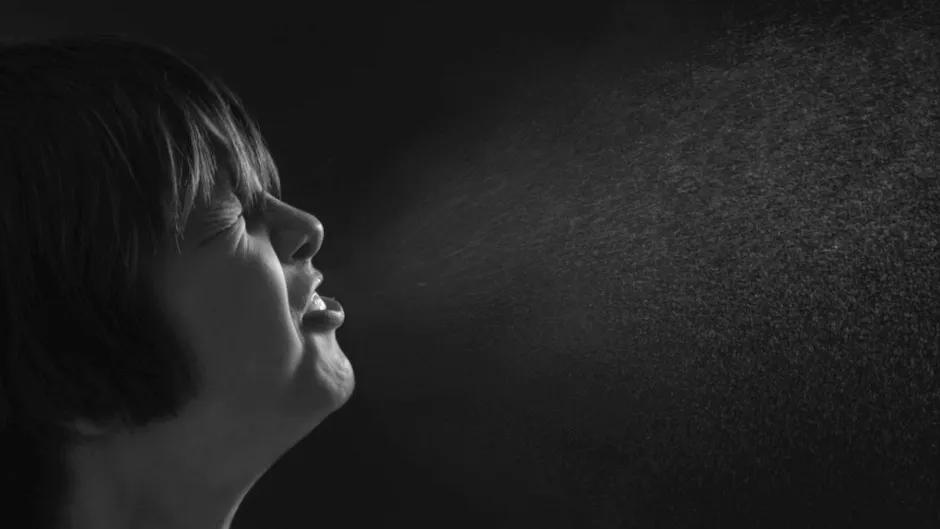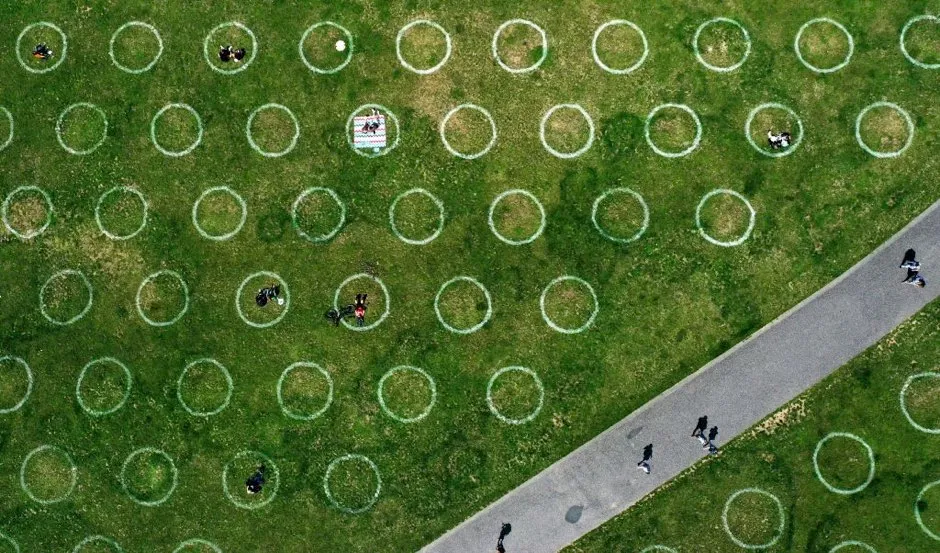From 24 July the wearing of face masks and coverings will be compulsory in shops and supermarkets in England in an effort to help slow the spread of the coronavirus. This will become an increasingly vital step in reducing infections, especially given recent evidence that the coronavirus can be transmitted in the air. But what does airborne transmission actually mean, and does this put us at more danger than we previously thought?
How does the coronavirus spread?
The scientific consensus is that the coronavirus is spread mostly through ‘respiratory droplets’: virus-laden globs of saliva or mucus that are propelled from an infected person’s nose or mouth when they cough, sneeze, talk or sing.
These droplets are larger than 5 micrometres (μm) in diameter and don’t tend to travel more than 1-2m before succumbing to gravity and landing on a surface, however, they could travel further under certain conditions. If someone else is close by, the droplets can enter their nose, mouth or eyes directly.
The droplets can also be picked up indirectly via a contaminated surface such as a door handle or shopping basket. This is why we’re all told to practise physical distancing and regularly wash our hands.

What is airborne transmission?
When we breathe, talk, cough, and so on, we also produce smaller droplets of mucus and saliva.
Droplets with a diameter of less than around 5μm are small enough to be suspended in the air (becoming what’s known as ‘aerosols’), where they can remain for minutes or even hours, potentially travelling much further than the larger droplets.
Measles is an example of a disease that’s transmitted mostly via smaller droplets.
Can the coronavirus be transmitted in this way?
Scientists are pursuing a few lines of possible evidence.
Firstly, lab studies. One recent study used laser light scattering to detect the droplets fired out as a participant talked. One minute of loud speech, the researchers calculated, could generate at least 1,000 small, virus-containing droplets, which could remain in the air for eight minutes or more.
Other scientists have created virus-laden aerosols using a device called a nebuliser, with one study finding that the virus in these droplets was still infectious after 16 hours. However, the World Health Organisation notes that artificially-created aerosols such as these “do not reflect normal human cough conditions”.
Read the latest coronavirus news:
- Coronavirus may have ‘devastating impact’ on the heart
- Antibody immunity could last 'just months'
- COVID-19: Llama-based antibody treatment 'neutralises' virus
Other studies have analysed air samples to look for the virus in the real world. One study in Wuhan, the city where the pandemic began, found the virus’s genetic material in samples from two hospitals, although the researchers say that they don’t know whether the virus was still infectious.
Finally, researchers have highlighted specific events where airborne transmission may have played a role. One such event involved a coronavirus outbreak in early 2020 in Guangzhou, China, when 10 people from three different families became infected.
Scientists traced the outbreak to a restaurant in which all three families had eaten lunch on Chinese New Year’s Eve. There was no close contact between the families, but they were all sitting in the airflow created by the restaurant’s air conditioning system, leading the researchers to conclude that airborne transmission may have been responsible.
On 6 July, over 200 scientists signed a comment piece in Clinical Infectious Diseases, urging medics and public health bodies to recognise the risk of airborne transmission. A few days later, the World Health Organisation updated its guidance on how the virus can spread, stating that airborne transmission could potentially occur in indoor, crowded, poorly-ventilated settings, and that more research was “urgently needed”.
How much of a role does airborne transmission play?
That’s the big question, says Dr Hassan Vally, an epidemiologist and infectious disease expert at La Trobe University in Melbourne, Australia. “This route of transmission is clearly possible, but we don’t know what percentage of new cases it accounts for.”
Vally also mentions two more unknowns about airborne transmission: how long the virus can survive inside the smaller droplets, and how many of these droplets you’d need to be exposed to in order to contract COVID-19.
“But regardless of what new evidence comes to light,” he says, “I don’t think it’s going to change the fact that the predominant route of transmission is the larger droplets.”
He also points to the fact that social distancing has been largely effective at halting the virus’s spread: “this is further evidence that people are most often getting the disease from close contact with other people.”

Will it change public health advice?
If the virus does have the potential to become airborne and stay infectious in the smaller droplets, it would mean that people are more likely to become infected without close contact. But Vally doesn’t think that this would lead to an overhaul of public health policies. “It would probably just mean that we encourage more mask use,” he says, “to stop the droplets reaching us.”
Another way to reduce airborne transmission would be to ensure that enclosed spaces are ventilated with clean outdoor air, rather than just recirculating the same air.
“And there might be things we can do to reduce the virus’s chance of surviving in aerosols,” says Vally, “perhaps by altering the [building’s] temperature or humidity.”
“I don’t think it’s going to be a game-changer,” he says. “It’s just another thing to learn about what is a very complex virus.”
Visit the BBC's Reality Check website at bit.ly/reality_check_ or follow them on Twitter@BBCRealityCheck
